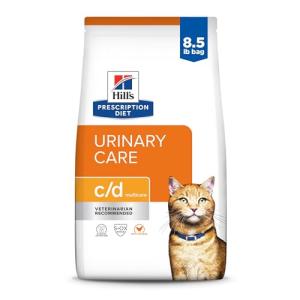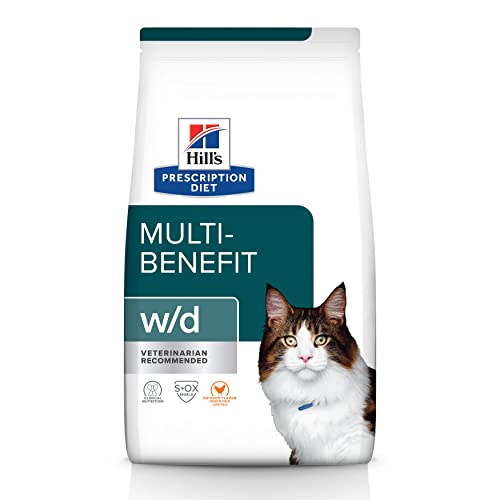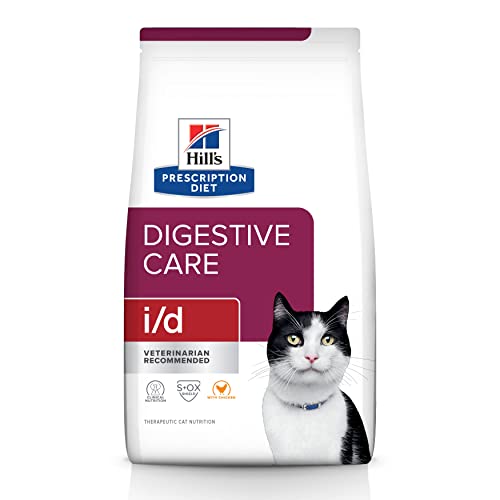Imagine a cat, vibrant and full of life, enjoying playful antics and affectionate cuddles for years beyond what nature might have otherwise intended. Imagine fewer heartbreaking sights of overcrowded shelters, fewer litters of kittens struggling for survival on the streets, and a deeper, more harmonious bond between humans and their feline companions. This brighter picture is not a fantasy; it is a tangible reality attainable through a simple yet profoundly impactful act: spaying or neutering your cat. These routine surgical procedures, often performed within a single day by a veterinarian, are more than just population control; they are acts of love, responsibility, and foresight that unlock a cascade of benefits for your individual cat, your household, and the broader community. To truly understand the significance of spaying and neutering is to recognize its transformative power, extending far beyond preventing unwanted litters, and deeply enriching the lives of our feline friends and the world they inhabit alongside us. This article will explore the myriad advantages of this compassionate choice, illuminating why spaying or neutering is not just a recommendation, but a cornerstone of responsible and loving cat ownership.
Perhaps the most compelling reason to consider spaying or neutering your cat lies in the profound health benefits it offers, often leading to a longer and significantly healthier life. On average, spayed or neutered cats statistically outlive their intact counterparts, a testament to the protective effect these procedures provide against a range of life-threatening conditions and risky behaviors. One key factor contributing to this extended lifespan is the dramatic reduction in the risk of certain cancers, specifically those affecting the reproductive system. For female cats, spaying eliminates entirely the possibility of developing uterine and ovarian cancer, two potentially devastating malignancies. Furthermore, spaying significantly reduces the risk of mammary, or breast, cancer, a common and often aggressive cancer in unspayed female cats. The earlier a female cat is spayed, ideally before her first heat cycle, the greater the protective effect against mammary cancer becomes, often diminishing the risk to near zero. For male cats, neutering similarly eliminates the risk of testicular cancer, another serious concern in intact males. While prostate problems are less common in cats compared to dogs, neutering can also reduce the risk of certain prostate-related issues later in life.
Beyond cancer prevention, spaying female cats offers crucial protection against pyometra, a severe and potentially fatal infection of the uterus. Pyometra occurs when the uterus becomes filled with pus, often due to hormonal changes after heat cycles. This condition is excruciatingly painful, requires emergency veterinary intervention, and can rapidly become life-threatening if left untreated. Spaying, by removing the uterus entirely, completely eradicates the risk of developing this dangerous infection, sparing female cats from significant suffering and owners from potentially heart-wrenching and expensive emergency care.
Another often-overlooked health benefit of spaying and neutering relates to the transmission of infectious diseases, particularly Feline Immunodeficiency Virus (FIV) and Feline Leukemia Virus (FeLV). These viruses, both serious and potentially fatal for cats, are frequently spread through bite wounds inflicted during fights, a behavior unfortunately common among intact cats, especially males, as they compete for territory and mates. Intact males are significantly more prone to roaming and engaging in aggressive encounters with other cats, increasing their risk of both contracting and spreading these viruses. Neutering, by reducing territorial aggression and the urge to roam, dramatically decreases the likelihood of fighting and subsequent viral transmission. While spaying provides less direct protection against viral transmission, by contributing to a calmer and less roaming female population, it also indirectly helps to reduce the overall prevalence of these diseases within the cat community.
Beyond the crucial health advantages, spaying and neutering profoundly transform a cat's behavior, often leading to a calmer, more content, and more affectionate companion. For female cats, spaying eliminates the cyclical "heat" periods, a time of intense hormonal fluctuations and often disruptive behaviors. A cat in heat can be remarkably vocal, incessantly meowing, yowling, and caterwauling, often at all hours of the day and night, causing significant disruption to household peace and sleep. They become restless, pacing and attempting to escape the house to find a mate, often spraying urine to mark territory and attract potential suitors. Spaying eliminates these heat cycles entirely, resulting in a much calmer, more predictable, and less demanding feline housemate.
Intact male cats are driven by powerful instincts to roam and seek out mates. This urge often leads them to escape homes, venturing far and wide in search of receptive females, exposing them to numerous dangers, including traffic accidents, fights with other animals, and getting lost and unable to find their way back home. Neutering significantly diminishes this roaming instinct, making male cats much more inclined to stay closer to home, reducing their risk of injury, disappearance, and the heartache associated with a lost pet.
Spraying and urine marking, a territorial behavior more pronounced in intact males and females in heat, can be a significant source of frustration for cat owners. Cat urine has a strong, pungent odor that is difficult to eliminate, and spraying can damage furniture, carpets, and other household surfaces. Neutering dramatically reduces or completely eliminates spraying behavior in male cats, resulting in a cleaner-smelling and more harmonious home environment. While some spayed females may occasionally spray, it is far less common and usually less intense than the territorial marking seen in intact cats.
Hormones play a significant role in feline aggression, particularly territorial aggression and fighting for mates, especially in male cats. Intact male cats are often more prone to aggressive behaviors towards other cats and sometimes even towards humans, driven by hormonal surges and territorial instincts. Neutering can significantly reduce hormone-driven aggression, leading to a more peaceful cat and a more harmonious multi-cat household. Spayed females, while generally less aggressive than intact males, can also exhibit territorial behaviors, particularly towards other female cats, and spaying can help to mitigate these tendencies as well.
Anecdotal evidence and some studies suggest that spayed and neutered cats often exhibit a more affectionate and calmer overall temperament. Freed from the constant hormonal drives associated with mating and reproduction, they may become more relaxed, less anxious, and more focused on bonding with their human families. This potential shift in temperament can strengthen the human-animal bond, leading to a deeper and more rewarding relationship, characterized by increased cuddliness, playfulness, and companionship.
Beyond the individual benefits to cats and their owners, spaying and neutering contribute significantly to the well-being of the wider community and address a pressing societal issue: pet overpopulation. The sheer number of unwanted cats in shelters and rescues across the globe is staggering, a heartbreaking testament to the overwhelming consequences of uncontrolled breeding. Millions of cats enter shelters each year, many of whom are healthy, adoptable animals, yet sadly, a significant portion face euthanasia simply due to lack of space and resources. Spaying and neutering are the most humane and effective tools we have to address this crisis at its root, preventing countless unwanted litters from being born and contributing to the already overflowing shelter system.
Animal shelters and rescues operate tirelessly, often on limited budgets and with dedicated but strained staff and volunteer teams. Overcrowding is a constant challenge, stretching resources thin and impacting the quality of care they can provide to individual animals. By reducing the influx of unwanted cats, spaying and neutering alleviate the strain on these vital organizations, freeing up resources to care for animals truly in need of rescue, rehabilitation, and specialized medical attention. This also allows shelters to focus on improving adoption rates and finding loving forever homes for the animals in their care.
Spaying and neutering play a critical role in managing stray and feral cat populations, with wide-ranging benefits that extend beyond just population control. Stray and feral cats can have negative impacts on local wildlife, as previously discussed, through predation and competition. They can also pose public health concerns, potentially carrying and transmitting diseases to humans and other animals. Furthermore, feral cat colonies can sometimes become a community nuisance, causing noise, odor, and sanitation issues. Targeted Trap-Neuter-Return (TNR) programs, which involve humanely trapping feral cats, spaying or neutering them, vaccinating them, and returning them to their colonies, are a recognized and effective method for managing these populations over time, humanely reducing their numbers and mitigating their negative impacts.
In many areas, animal control services are funded by taxpayer dollars. The costs associated with capturing, sheltering, and, unfortunately, euthanizing stray and unwanted animals place a significant burden on public resources. By reducing the number of stray animals through widespread spaying and neutering initiatives, communities can potentially reduce these taxpayer burdens, freeing up funds for other essential public services.
Finally, and perhaps most importantly, spaying and neutering are hallmarks of responsible pet ownership. Choosing to spay or neuter your cat is a clear demonstration of care, compassion, and a commitment to both the well-being of your individual animal and the wider feline community. It reflects an understanding of the broader societal implications of pet ownership and a proactive step towards addressing the complex issue of pet overpopulation. Responsible pet ownership extends beyond just providing food and shelter; it encompasses making informed and ethical choices that benefit both your animal and the world around you, and spaying or neutering is undoubtedly one of the most responsible and loving choices a cat owner can make.
Despite the overwhelming evidence supporting spaying and neutering, several myths and misconceptions persist, often hindering pet owners from making this beneficial decision. One common myth is that spaying or neutering will cause a cat to become fat and lazy. This is simply untrue. Weight gain in cats is primarily caused by overfeeding and lack of exercise, not by the spaying or neutering procedure itself. While a cat's metabolism may slightly slow down after being spayed or neutered, this is easily managed by adjusting their diet and ensuring they get adequate exercise. With mindful feeding and playtime, spayed or neutered cats can maintain a healthy weight and remain active and playful throughout their lives.
Another misconception is that spaying or neutering is somehow "unnatural" or interferes with a cat's natural instincts. However, living as a domestic pet is already a highly "unnatural" existence for a cat in many respects. Our pets rely on us for food, shelter, and protection, and their lives are shaped by human intervention in numerous ways. In the context of pet overpopulation and the immense suffering of unwanted animals, the benefits of spaying and neutering far outweigh any abstract arguments about "naturalness." Furthermore, framing spaying and neutering as a responsible intervention within a human-created situation, addressing the consequences of domestication and uncontrolled breeding, provides a more accurate and ethical perspective.
The notion that a female cat should have "just one litter" before being spayed is another common, yet entirely unfounded, belief. There is absolutely no health benefit to a female cat from having a litter of kittens. In fact, pregnancy and birth carry inherent risks, and choosing to allow a cat to have a litter simply contributes to the pet overpopulation crisis. While the emotional appeal of experiencing kittens may be strong, the reality is that countless kittens already struggle to find homes, and adding more to the equation is neither responsible nor beneficial for the wider cat population.
Cost is often cited as a barrier to spaying and neutering, and while the initial expense can be a concern for some pet owners, it's crucial to consider the long-term financial implications. Spaying and neutering are one-time costs that can actually lead to significant long-term savings by preventing expensive veterinary bills associated with reproductive system cancers, pyometra, and injuries from roaming and fighting. Furthermore, many communities offer low-cost spay/neuter clinics and programs, making these procedures more accessible to pet owners on a budget. When weighed against the lifetime costs of pet ownership and the potential expenses of not spaying or neutering, the investment in these procedures is remarkably small, especially considering the immeasurable benefits they provide.
Finally, some male cat owners worry that neutering will somehow diminish their cat's "masculinity" or alter their personality in a negative way. It's important to remember that cats do not have the same concept of "masculinity" as humans, and neutering does not fundamentally change their personality. Neutering simply reduces hormone-driven behaviors that can be problematic, such as aggression and spraying, while preserving the affectionate, playful, and unique personality of each individual cat.
Spaying or neutering is typically performed when cats are around 4-6 months old, generally before they reach puberty or a female cat experiences her first heat cycle. However, cats can be safely spayed or neutered at any age, although earlier intervention often provides greater health benefits and prevents the development of unwanted hormone-driven behaviors. The surgical procedures themselves are routine and relatively straightforward, performed under general anesthesia by a qualified veterinarian. In females, spaying usually involves an ovariohysterectomy, the removal of both the ovaries and the uterus, or an ovariectomy, the removal of only the ovaries. In males, neutering involves castration, the removal of the testicles.
Post-operative care is generally minimal, and most cats can return home on the same day as their surgery. Veterinarians typically provide pain medication to ensure comfort during recovery, and it's crucial to keep the incision site clean and dry and prevent the cat from licking or interfering with the incision, often using an Elizabethan collar or cone. Following the veterinarian's post-operative instructions diligently is essential for ensuring a smooth and uncomplicated recovery.
Spaying and neutering are remarkably safe procedures when performed by a qualified veterinarian. As with any surgical procedure under anesthesia, there are minimal inherent risks, but the benefits of spaying and neutering far outweigh these risks in the vast majority of cases. Choosing to spay or neuter your cat is not just a responsible decision; it is an act of love, care, and profound benefit to your feline companion, your household, and the wider community. It is a commitment to a healthier, happier life for your cat, and a step towards creating a more compassionate and sustainable world for all animals. Schedule that appointment today – it’s the loving choice that truly makes a lifetime of difference.







